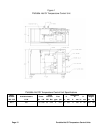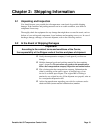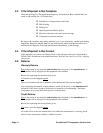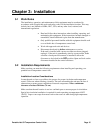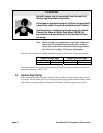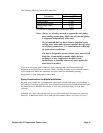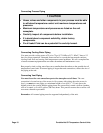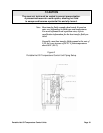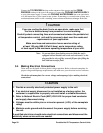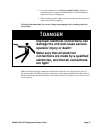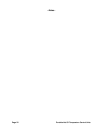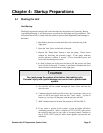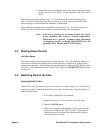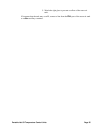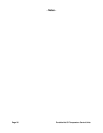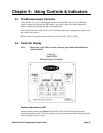
Page 20 Portable Hot Oil Temperature Control Units
Connect the TO PROCESS hookup to the entrance of the process and the FROM
PROCESS hookup to the exit of the process. Connect the COOLING WATER SUPPLY
to your plant water supply. Connect the COOLING WATER DRAIN line to an open drain,
or to the return line of your central water system. If returning to a central water system, use a
condensate/return tank to avoid a standing water column on the heat exchanger drain line.
! CAUTION
If you are routing the drain line to an open drain, make sure that
the line is directed away from personnel to avoid scalding.
Carefully select connecting lines and connectors between the portable hot
oil temperature control unit and the process to best meet the needs and
requirements of your application.
Make sure lines and connectors have a service rating of
at least 100 psig (689.5 kPa/6.9 bars), and a temperature rating
at least equal to the maximum operating temperature of your unit.
Note: To prevent debris from fouling reservoir fluid, the unit is
equipped with an internal vent on the reservoir tank. Use the
plug provided to close off the external fill port after filling the
unit with heat transfer fluid.
3-4 Making Electrical Connections
These units are designed for three-phase voltage operation. Refer to the unit nameplate for
proper voltage and amperage requirements, and make sure your electrical service conforms.
Check the unit nameplate for correct voltage and amperage before making electrical
connections!
! CAUTION
1. Provide a correctly sized and protected power supply to the unit.
2. If an electrical supply disconnect is not installed as a factory option, the
customer is responsible to properly size and install a suitable disconnect.
3. Refer to National Electric Code (NEC) 430-24-26 for proper feed conductor
and supply disconnect sizing.
4. Voltages must be within plus or minus ten percent (±10%) of the nameplate
rating.
5. Maintain a safe ground and disconnect the power supply before servicing
the unit.
A qualified electrician should make electrical connections and disconnect the
electricity when service calls are needed.



